Top 10 Essential Alan Moore Comics in Honor of His 70th Birthday
Posted on November 17, 2023
by Eric S
One of the highest-selling and critically acclaimed comic writers of all time, Alan Moore has basically cemented his status as a comic legend with numerous books that have consistently found their way onto lists of the best comics of all time. As the writer behind Watchmen, V for Vendetta, The League of Extraordinary Gentlemen, and many other must-read comics, Moore’s dark, thought-provoking books have played a huge role in elevating mainstream audiences’ perception of the comic book medium. In recent years, Moore has withdrawn from the public eye and seemingly done everything in his power to disassociate from his most beloved creations, but many of these comics continue to be important cultural touchstones both in and out of the comic world. Whether you’re a longtime fan or completely new to comics, each of these selections is essential reading.
For more great comics, make sure to check out the offerings of your local Library branch as well as the hoopla app.
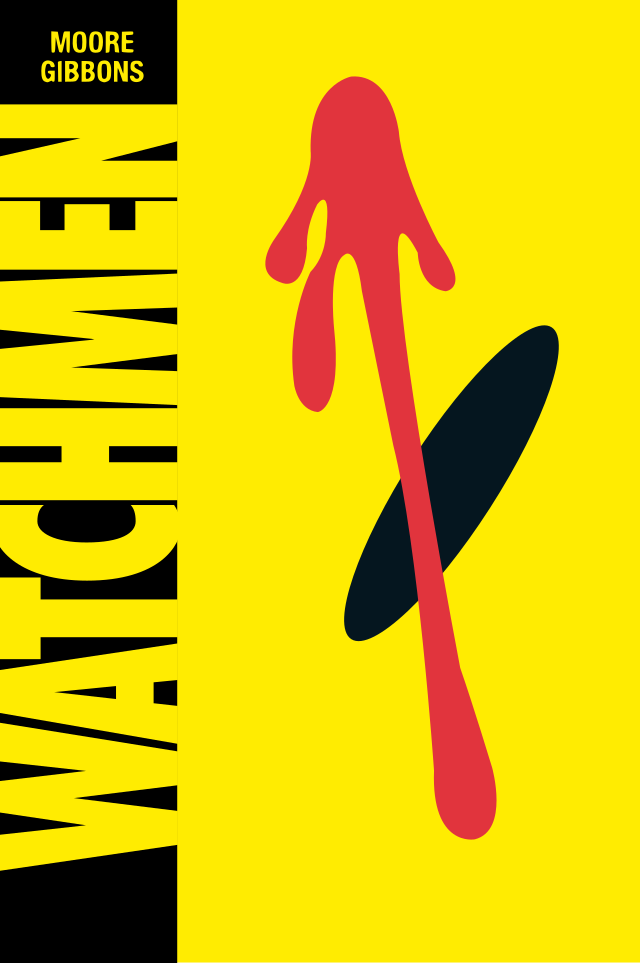
Watchmen
Often cited as the greatest comic ever written, Watchmen has been pored over by comic nerds, literary scholars, pop culture aficionados, and probably everyone else over the better part of 40 decades. While the book is typically discussed in terms of its critique of authority and American exceptionalism, it’s also an astute deconstruction of superheroes and the medium of comic books (the beautiful art by Dave Gibbons and colors by John Higgins certainly help with that). In recent years, politicians, filmmakers, and internet trolls have distorted Moore’s original intentions with Watchmen (particularly in terms of misreading the morally inflexible character of Rorschach), but the book remains essential reading if superheroes, comics, or the rise of fascism are even remotely among your concerns. After you read the comic, make sure to check out the movie (which seems to be aging better than expected) and the extremely clever TV series.
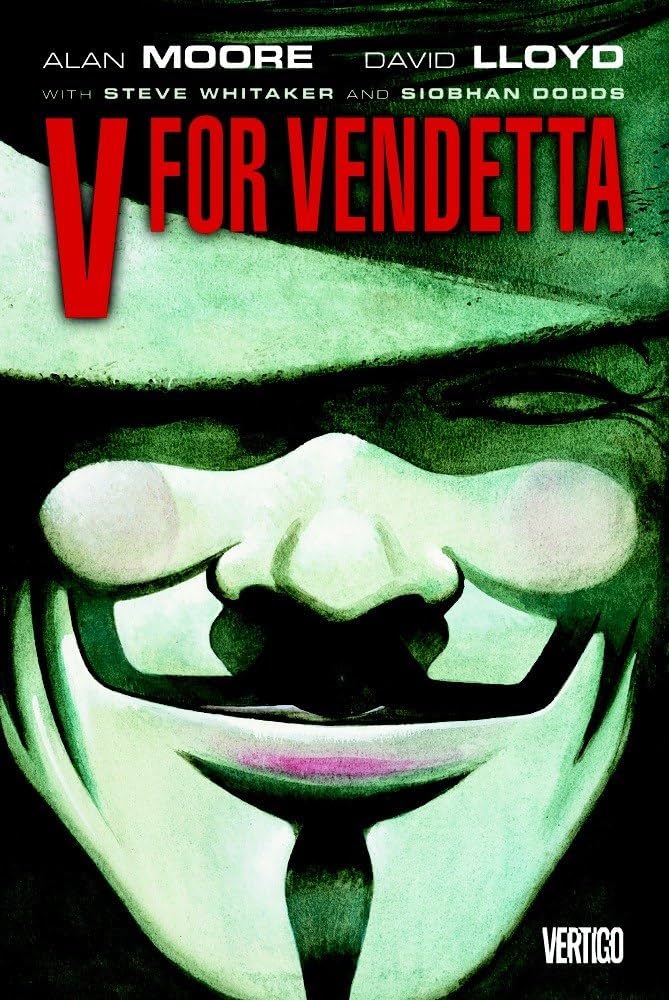
V for Vendetta
You’ve seen the movie and you’ve seen Anonymous wearing Guy Fawkes masks, so now is the time to check out the source material. Initially serialized in the British anthology comic Warrior from 1982 to 1985, V for Vendetta would grow in popularity over the years due to subsequent releases by DC Comics. Featuring a mysterious anarchist named V and his young protégé, Evey, V for Vendetta takes place in a dystopian UK that’s essentially a police state. While the themes are rather heavy–handed and on-the-nose (turns out state-mandated conformity and death camps are really, really bad), Moore touches on some major societal concerns that, unfortunately, continue to be relevant in our contemporary political climate. By the time you’re done reading it, you’ll be ready to lead the revolution.
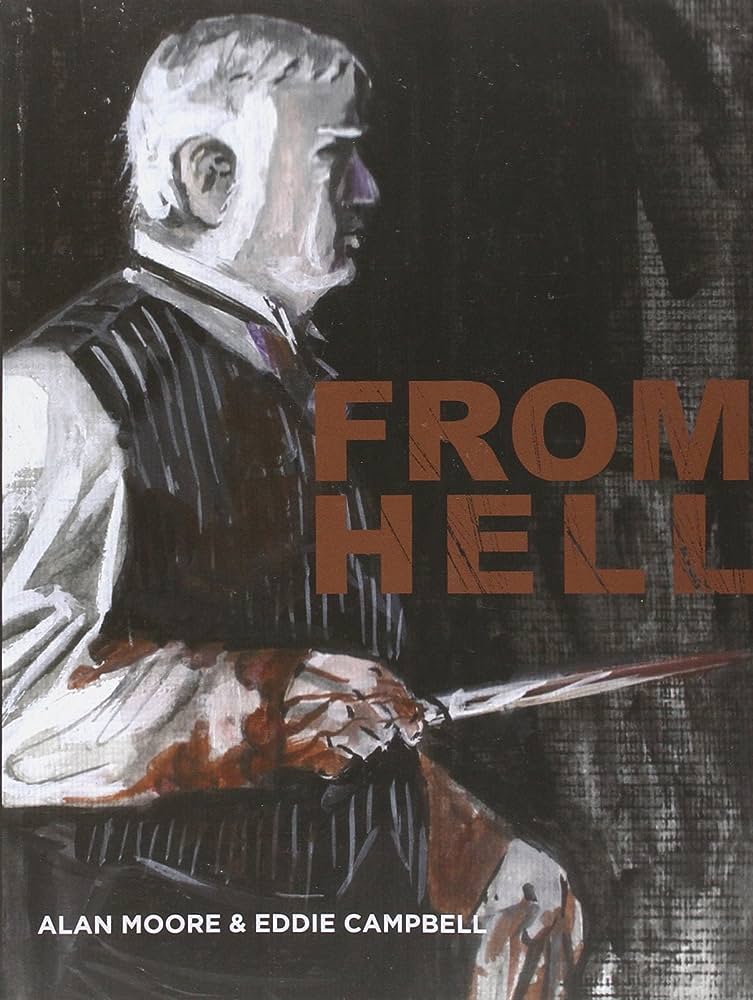
From Hell
One of Moore’s longest, densest works, From Hell is so much more than the film adaptation with Johnny Depp from 2001. Ostensibly about the real identity of Jack the Ripper, the meticulously researched From Hell has plenty to say about social class, male privilege, and the way that social structures reinforce violence on a mass scale—among a million other things. Written with a sense of empathy toward the working class, especially sex workers, From Hell uses the hypocrisy of the ruling class of late Victorian England to illuminate modern day issues. Artist Eddie Campbell’s scratchy, frenetic style is somehow both grounded and dreamlike, which adds to the eeriness of Moore’s tale. At almost 600 pages (plus an extensive index), From Hell is a commitment, but one that is more than worthwhile. It is definitely the Alan Moore book you want to take with you if/when you’re stranded on a desert island.
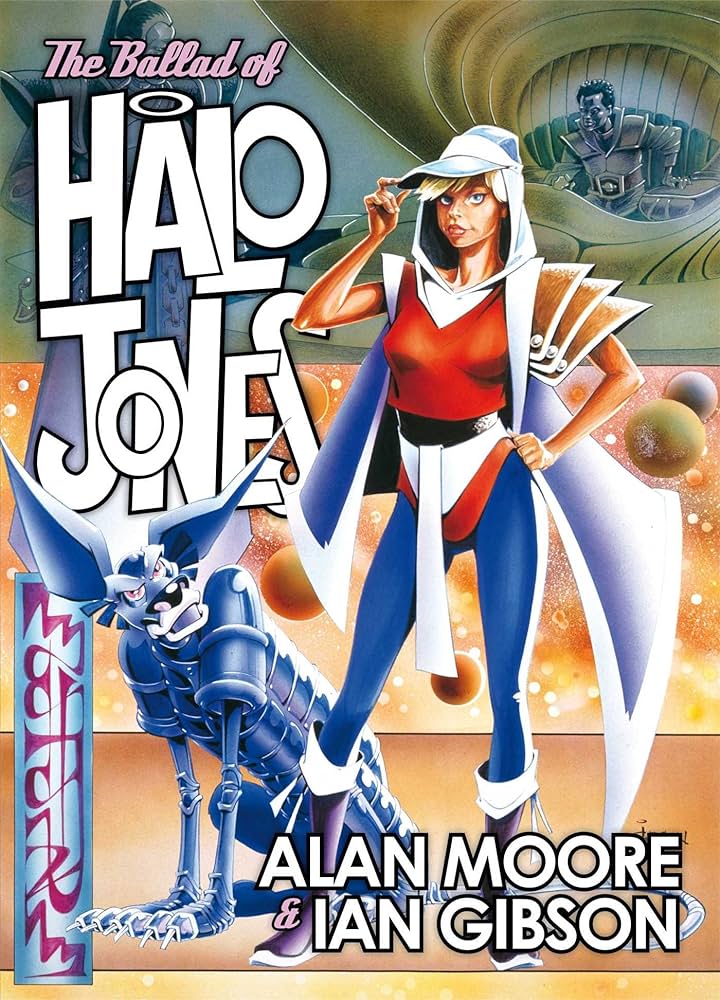
The Ballad of Halo Jones Book One
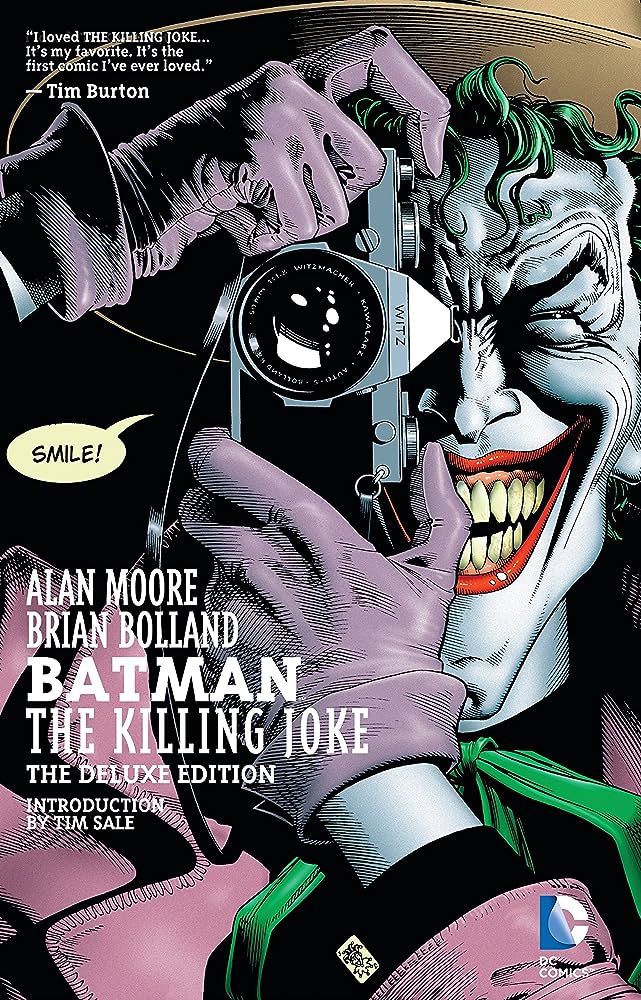
The Killing Joke
1988 was not a good year to be friends with Batman. Not only did fans vote to have the second Robin, Jason Todd, killed off during the famous “A Death in the Family” storyline, but in Alan Moore’s The Killing Joke, well...I’ll just let you read it for yourself. Along with Frank Miller’s The Dark Knight Returns and Year One, The Killing Joke is among the several iconic dark and mature Batman comics of the late 1980s that would have a huge influence on DC books for decades to come. Moore closely examines the character of the Joker, not only drawing parallels between the Clown Prince of Crime and Batman himself, but also hinting at the character’s confusing history—and his possible awareness that he’s in a comic book. I know, pretty meta. I would be remiss if I didn’t also mention Brian Bolland’s intricately detailed art (which might look even more incredible in the black and white version).
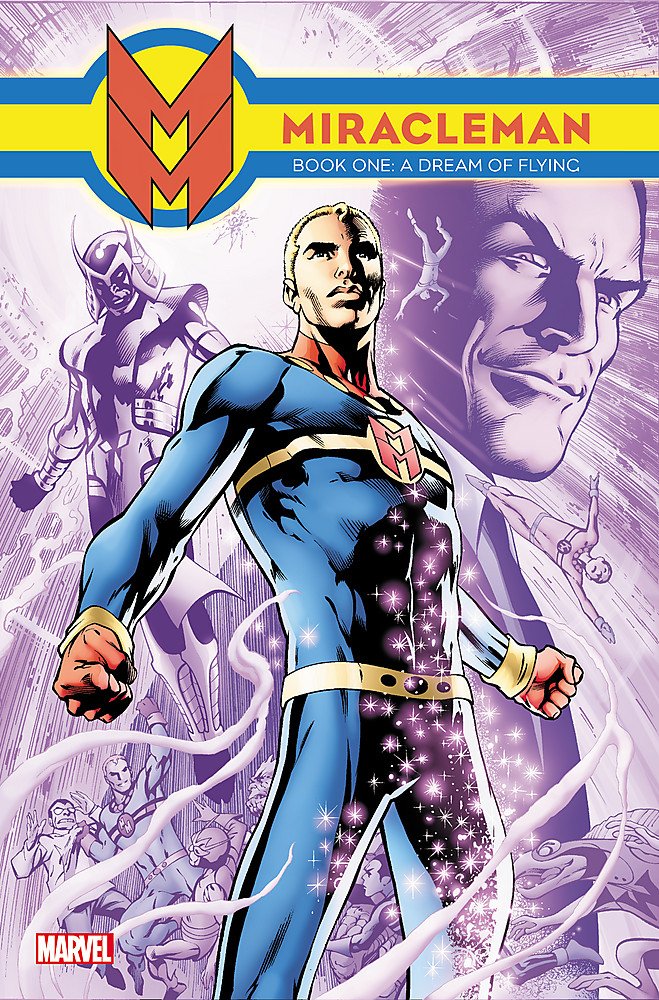
Miracleman Book One: A Dream of Flying
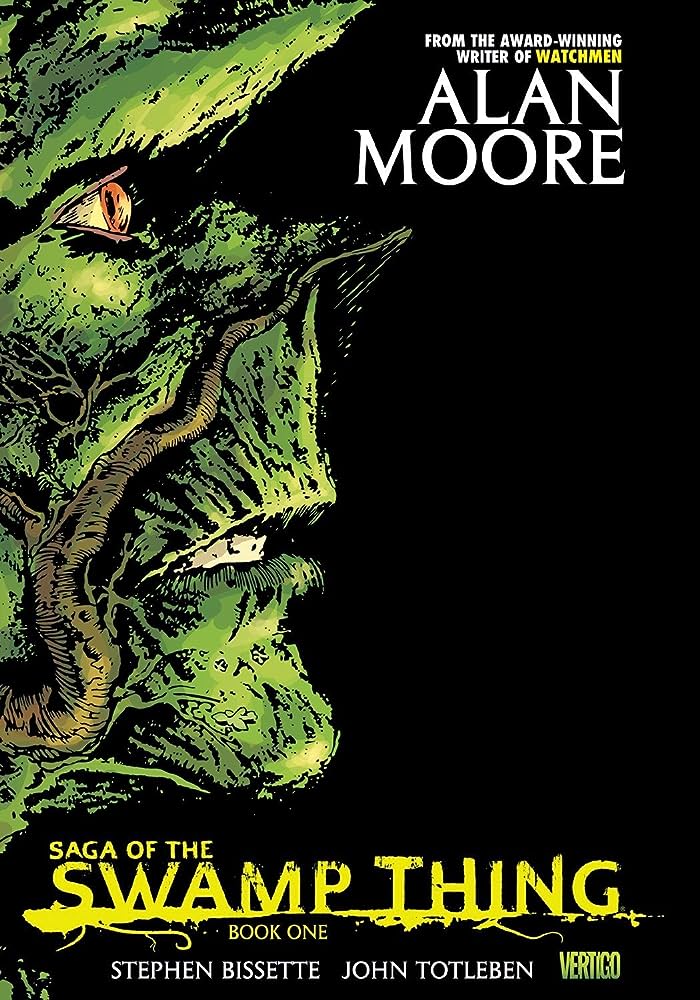
Saga of the Swamp Thing
Dark, philosophical, literary, and subversive, Moore’s run on Saga of the Swamp Thing (or Swamp Thing Vol. 2, if you’d prefer) is a forerunner to the boom of dark, philosophical, literary, and subversive comics of the ‘90s, like Sandman, Hellblazer, Shade The Changing Man, The Invisibles, and probably 500 others. Moore jumped on the book with issue #20, in which he tied up some loose ends, then sent the character of Swamp Thing into an existential spiral in the following issue with the start of his now-famous storyline, “The Anatomy Lesson.” And the medium of comics has been so much better for it. Can Swamp Thing reclaim his humanity, even after learning he’s not as human as he thought? Find out in one of the best comic book runs, well…ever.
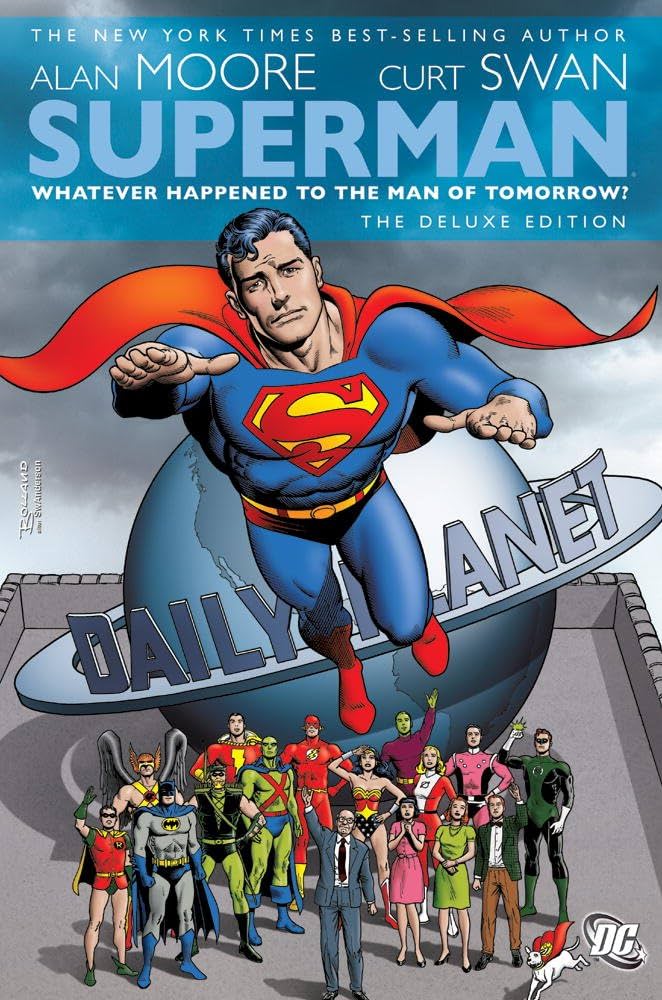
Superman: Whatever Happened to the Man of Tomorrow?
Along with Moore’s “For the Man Who Has Everything” from Superman Annual #1 (also included in this volume), “Whatever Happened to the Man of Tomorrow” stands as one of the most beloved Superman stories of all time. Told across Superman #423 and Action Comics #583 from 1986, this two-part story shows Superman’s final battle with his biggest foes and is a near-perfect conclusion to the huge, spanning tale of the character. While it’s cool to see a hypothetical last Superman story, there’s a couple things that make “Man of Tomorrow” an exceptional comic. The first is that Moore draws on Superman’s entire history, cohesively tying together 50 years’ worth of characters, ideas, and storylines in a way that truly celebrates the Man of Steel’s incredible past. Secondly, the comic is drawn by Curt Swan, who is not just a classic Superman penciller, but, for many, the definitive Superman artist—further rooting “Man of Tomorrow” in Superman’s rich legacy. A comic that exhibits both reverence for old comics as well as Moore’s penchant for subverting expectations and challenging the superhero status quo, this book is a great place to start if you’ve never paid much attention to Superman before.
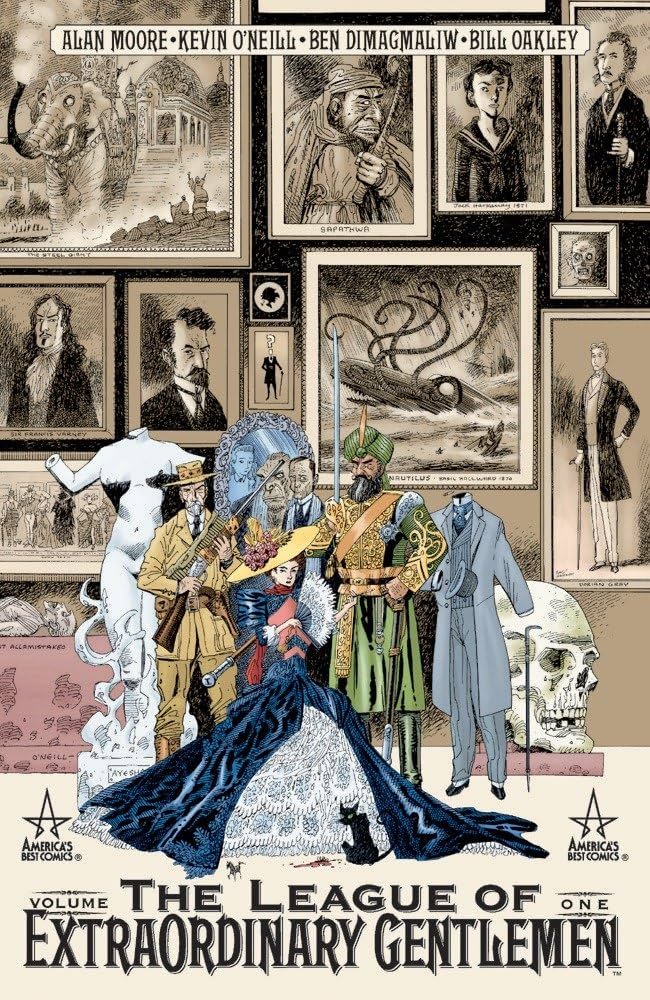
The League of Extraordinary Gentlemen
After a brief stint writing superhero books for Image in the mid-1990s, Moore would close out the decade by forming America’s Best Comics, an imprint of Wildstorm (that would eventually be sold to DC, with whom Moore had a falling out a decade prior—it’s all very confusing). Although the line of comics would produce some incredible books, including Tom Strong, Promethea, and Top 10, arguably the most popular was Moore’s The League of Extraordinary Gentlemen, which he created with artist Kevin O’Neill. Amidst a late ‘90s comic book climate characterized my extreme, violent, muscle-bound, and hyper-masculine heroes, Moore flipped the script by creating a supergroup with some of the top figures of Victorian fiction, including Captain Nemo, The Invisible Man, Mina Murray, and Allan Quatermain. If you like classic literature and comics that have no respect whatsoever for the absurdity of ‘90s superhero books, then League is a must read. The movie, however, you can skip. Sean Connery certainly wishes he did.

Supreme: The Story of the Year
You may think it’s odd that Alan Moore (a writer who brought subtlety and sophistication to a genre not typically associated with either) would write a superhero book for Image (the embodiment of excessive, hypermasculine superhero spectacles) during its peak in the ‘90s, and you would be correct. Until Moore took over the book with issue #41, the character of Supreme was a crazed, egomaniacal antihero. Moore was given free rein to reinvent the character, and under his watch, the comic would continue to be a Superman homage (parody? deconstruction? critique?), albeit one much more in line with the more optimistic Superman of the ‘50s and ‘60s, particularly from the stories of Mort Weisinger. Contrasting greatly with his more realistic and cynical tearing down of the superhero myth in Watchmen and The Killing Joke, Moore uses Supreme to build it back up—something he would continue to explore to even greater depths a few years later with Tom Strong. If Supreme has you intrigued, Moore actually wrote quite a few superhero comics for Image around this time, including Spawn, WildC.A.T.S., and the criminally underrated 1963, which is both extremely difficult to track down and will likely never be reprinted.
Did you like this blog post? Keep up to date with all of our posts by subscribing to the Library’s newsletters!
Keep your reading list updated with our book lists. Our staff love to read and they’ll give you the scoop on new tv-series inspired titles, hobbies, educational resources, pop culture, current events, and more!
Looking for more great titles? Get personalized recommendations from our librarians with this simple form.

